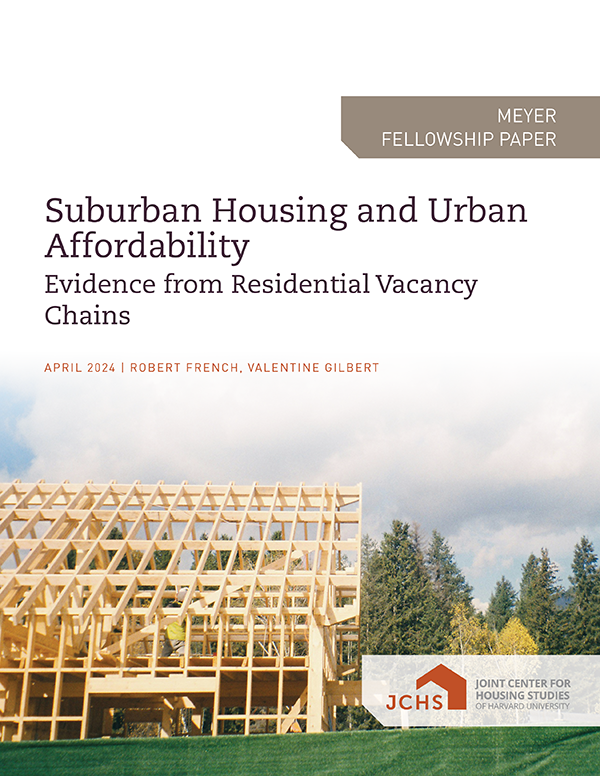Suburban Housing and Urban Affordability: Evidence from Residential Vacancy Chains
This paper shows how different housing submarkets are linked by residential vacancy chains – the series of moves across housing units initiated by the construction of new housing. Using administrative data on the residential histories of the U.S. population, we compare the characteristics of vacancies created by new suburban single-family homes to those created by new urban multifamily housing. We find that vacancy chains are short, with 90% ending within three rounds of moves; and, consequently, that each new suburban home leads to only .015 moves in low-income urban neighborhoods. We then conduct a simulation exercise to understand what the observed patterns of vacancy chains imply about the welfare and price effects of new housing supply. We show that the geographic distribution of moves created by vacancy chains is correlated with the geographic distribution of welfare and price effects, and that the number of vacancies created in a neighborhood is as strong a predictor of price effects as are model-derived cross-neighborhood substitution effects. Our results imply that new suburban housing supply has little effect on urban housing affordability or on the welfare of low-income urban households.

